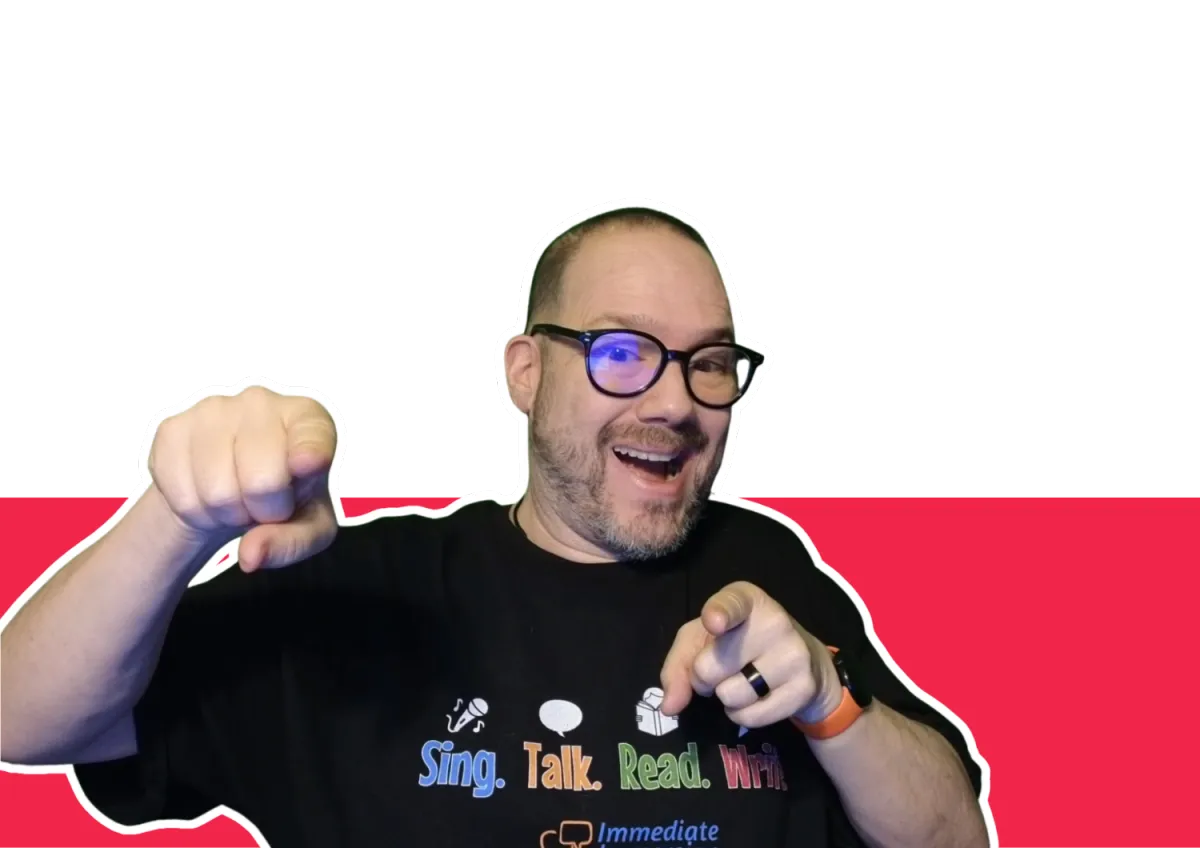Students are AMAZING!
Watch as my amazing students immerse themselves in the language through interactive lessons, storytelling, and dynamic group activities. These videos highlight the effective use of comprehensible input methods and the engaging environment we create together.

First Day of School
This is a first day of a Spanish 1 class. Notice how the class is mainly conducted in Spanish, yet is made 100% comprehensible with the running vocabulary list on the board. I think it is very important to teach a language class as much as possible in the target language. By setting the stage on the first day of school, it sets the tone and high-expectations for the rest of the year.
Personalization in German
This is a German demo I did with my Spanish class. This is how the first day of a German level 1 class would go.
These students have no experience in German. I wanted to show how students can comprehend even though it's not an "easy" language like Spanish.
Spanish 2 Movie Talk
This is a demo of me presenting an animated short to my level 2 students in the first couple weeks of school.
This is an activity where we narrate and ask questions about a short video and get students to engage by acting out some of the characters.
Spanish 3 Class
This is the 10th day of school for my 8th-grade, Spanish 3 class. The topics were quite random, but we were in Spanish nearly the whole class. You can see the various activities I did on this block day. Our focus was to do Power PQA with "what makes you special?" and we did some of that, but sometimes, random student stuff took over. We had a lot of fun and still acquired some language! :)
Spanish 2 - Story-Asking
In this demo, I am asking a story with my level-2 Spanish class. This is the first story of the year in the first month of class. We're focusing on the Super Verbs (there is, has, wants, likes, is, and goes).
Although it may look like it's teacher focused, it's actually student centered as the students are answering the questions to create the story.
Conversations about Fears in Spanish 2
In this demo, I provide comprehensible input by talking about fears with my Spanish-2 class.
My only goal is to get to know students through their fears in the target language.
This is the second week of school.
Reading Demo
Reading is so important to the acquisition of any language. It is said that 70% of our language ability comes from what we read. Here you can see that through this methodical process of reading the text in the target language, having the students choral translate, explaining the grammar in context, and then asking varying comprehension questions, engages the student in all aspects of good reading habits.
Story Strip Demo
We tell a lot of stories in my classrrom and doing so with a story strip allows for greater repetitions of the targeted vocabulary and structures, while still allowing the students to interject their ideas and make the story their own. This is great for the visual learners who need extra visual clues to enhance their learning and comprehension.
Kindergarten Day Demo (Read Aloud)
Reading is the number one gateway to acquiring a language. Whether it be your native language or a second or third language, reading plays an important part. We all enjoyed being read to as children and by extending that into the classroom, we again build a joy for reading that will assist every student to become more successful in the classroom. Notice that in the beginning of the year, we read infant-style--not actually reading the text, but talking about the pictures. As the year progresses, we read more and more of the text, along with talking about the pictures. Adding leveled questions heightens the interaction and engagement, while allowing for instant assessment feedback as to the progress of the class.
"Scaffolded, Differentiated Questions" Demo
Questioning is ever so important when using any type of immersion-based methodology. We use questions to make sure that the content is comprehensible to all students. We can ask low-level yes/no or either/or questions. We can ask mid-level question-word questions: who, what, where, when. Or we can ask high-level question-word questions: why, how. By tailoring each of these questions to the level of the class and/or individual student, we can assure that everyone is successful and success breeds more success.
"Teaching a Verb" Demo
Not the best demo. It's the last period of the day on Halloween. Keeping them sort of engaged for 7 minutes was the best I could do! But you can see how one can teach verbs without memorizing verb charts.
Student Retell Demo
Here you see a top-level student retell a story looking only at pictures in April of their level-1 year.
You can see she is extremely nervous. She is surrounded by native speakers out of the frame, but she still did incredibly well.
She's not looking at any written text. She is looking at pictures and telling what is happening with the best language she can.
© Scott Benedict. All rights Reserved.




Facebook
Instagram
Youtube